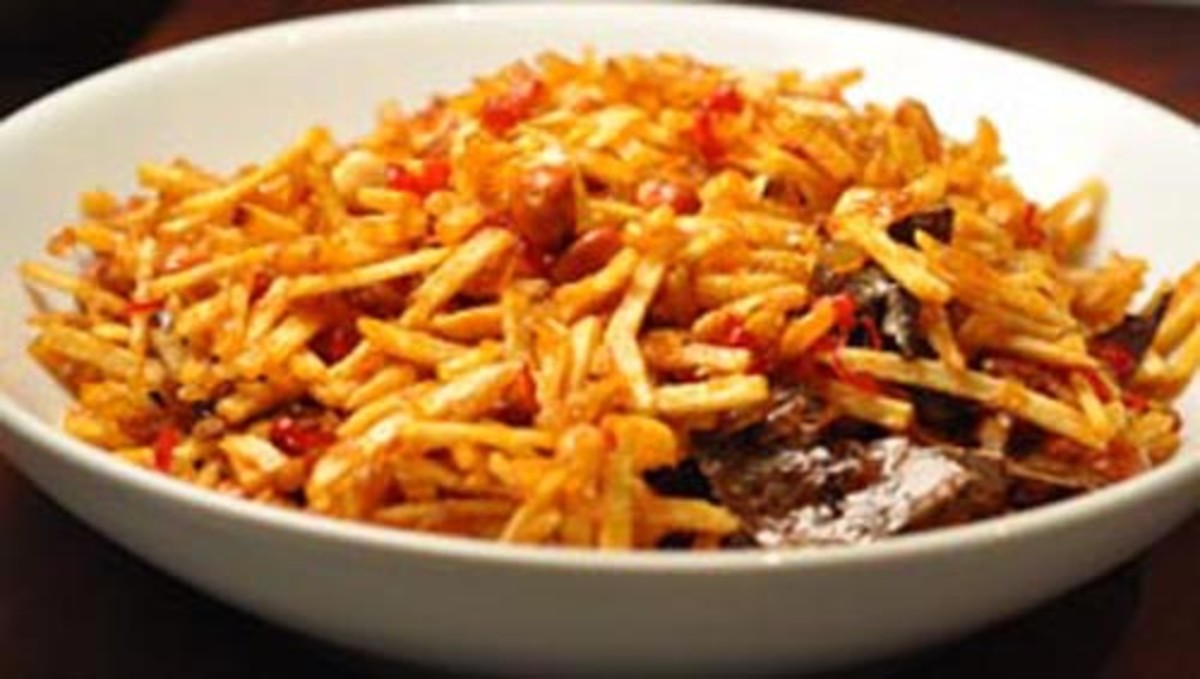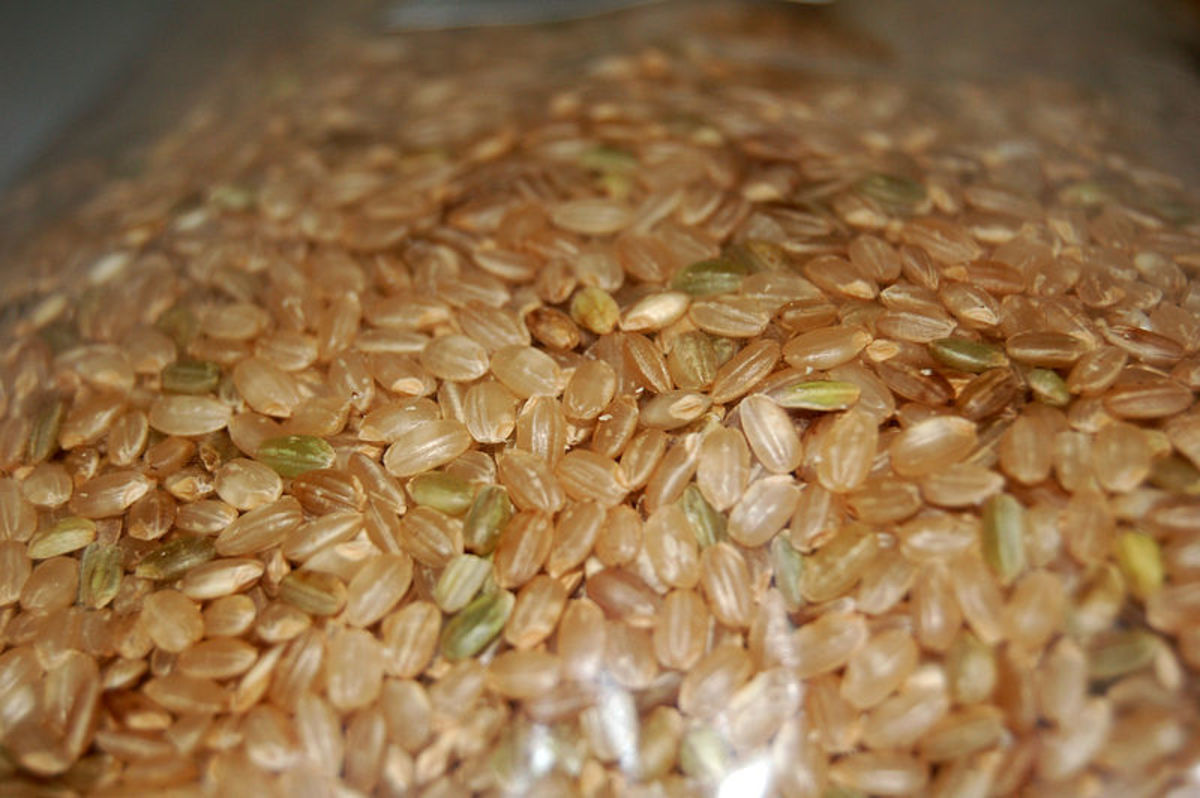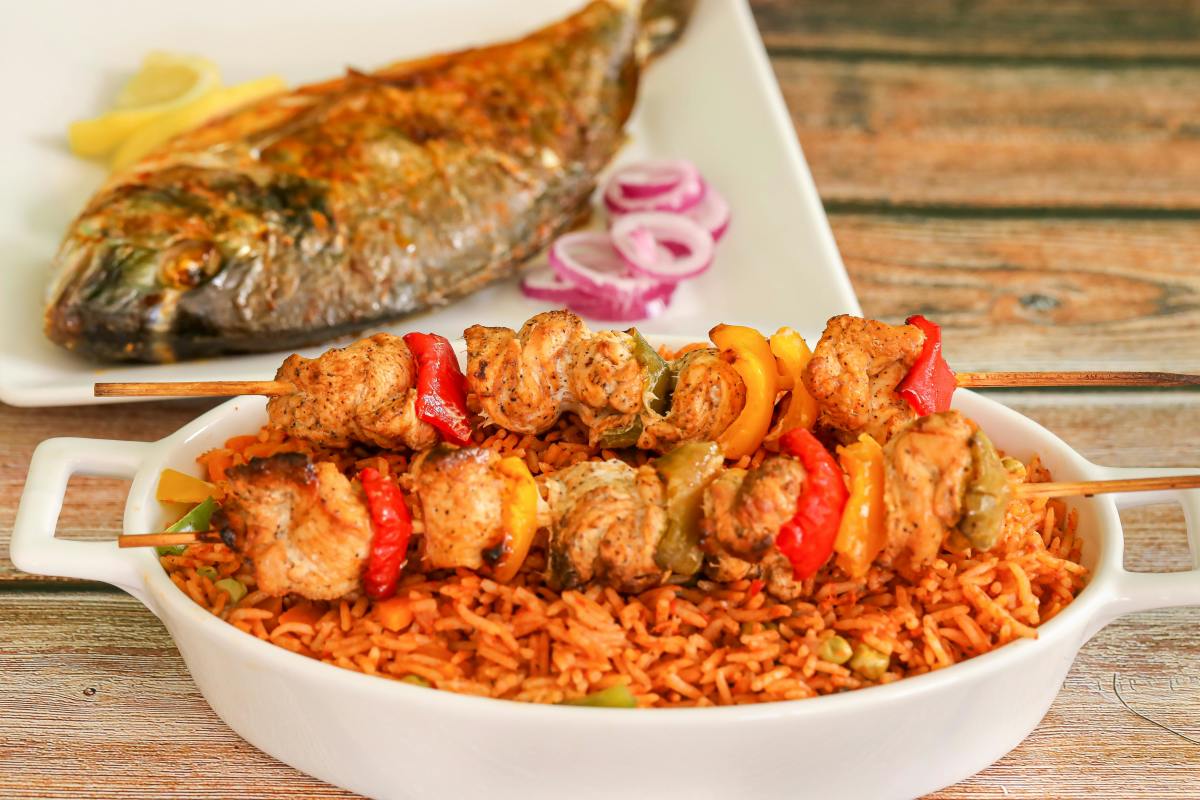Rice Feasts of SEAsia
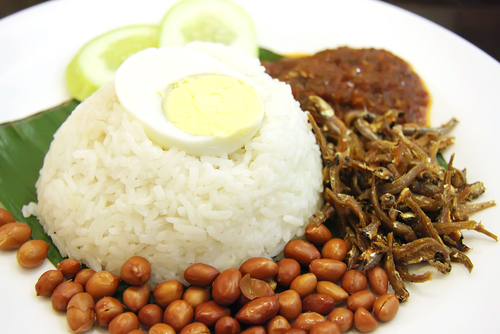
'Yum cha ' literally means 'drink tea' but it also means eating myriad varieties of little steamed and fried snacks whilst sipping this liquid of the leaf of the Camellia plant. Malaysian, Singaporean and Indonesian cuisines abound with similar gastronomic allegories for rice where a veritable banquet of dishes centred around the grain, plain or savoury, are simply named as a "style" of rice.
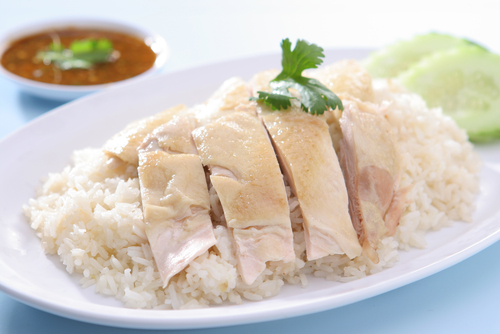
Hainan Chicken Rice
Hainan Chicken rice is one of the most popular dishes of Malaysian and Singaporean street food. Its universal appeal to all palates has seen its appearance on the menus in 5 star hotels - at 5 star prices!
It comprises aromatic garlicky rice cooked in chicken stock and accompanied, at a minimum, by pieces of silky smooth-flesh steeped chicken, cucumber slices and a bowl of clear chicken soup along with condiments of fresh garlic-and-chilli sauce and fresh ginger sauce.
Other classic accompaniments are roast chicken, sweet roast pork as well as crisp skin roast belly pork. The chicken rice vendor allows BYO of the latter two from your favourite stall if he doesn't sell them himself.
Other SE Asian Rice-centred Feasts
Nasi means "rice" in Malay and rice allegories include Nasi Kandar and Nasi Padang . The latter is of west Sumatran origins and immensely popular in Malaysia and Singapore. Plain white rice forms the carbohydrate core for both.
Nasi Kandar features Indian-Muslim (known in Malaysia as 'mamak ') dishes including fish head curry, and other spiced fried dishes. "Kandar " means 'to carry with a pole' in Malay and the vast collection of dishes along with the rice was originally carted around the streets and into the rubber plantations for sale to poor labourers on two baskets suspended at each end of a pole draped across the shoulders.
When you sit down to Nasi Padang meal, the whole shooting match of the specialities of this Indonesian region are served up in small dishes on the table. Each diner is given a plate of rice. You only pay for what you eat or touch whilst the rest is returned for service again. There's a certain etiquette involved here: gravied dishes which are touched are considered eaten, finished or not, and therefore chargeable in full. Dishes with readily definable portions such as the magnificent fried chicken, only the number of portions taken off the serving plate are counted. [This form of food service would have Western health and food safety authorities totally freaked out but doesn't seem to have done anyone in South East Asia any harm through the centuries!]
There's also Nasi Tumpeng (a traditional Indonesian ritual feast centred
around a conically shaped white or tumeric yellow rice cooked in coconut milk), and the Malay Nasi Lemak (coconut rice). Each Nasi involves its own distinctive range of spiced dishes that reflects its cultural roots.
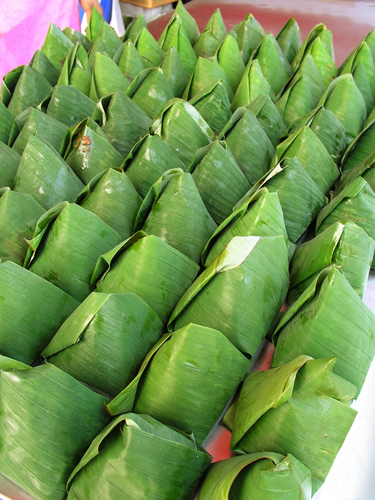
Nasi Lemak
Nasi Lemak , eaten from breakfast through to supper, may be a basic snack, an everyday meal or an elaborate feast depending on the number of dishes served with it. Crisp ikan bilis with peanuts (simply plain fried or spiced) and cucumber slices are immutable accompaniments.
In basic snack form, nasi lemak is a neat banana leaf package of coconut rice with a few ikan bilis, a slice of cucumber, a dab of sambal blachan (a chilli paste made with dried shrimp paste) and perhaps a quarter of a hard-boiled egg.
As a meal whether grand or simple, the coconut rice will be served separately with a range of Malay-style curries including as prawn, chicken, mutton as well as a rendang (dry beef curry); fried tamarind marinated prawns; fried fish; spicy vegetable dishes; and eggs either fried or hard-boiled. The hard-boiled eggs may be dollied up by being deep-fried and coated in a chilli-onion-blachan sambal sauce.
How to cook Nasi Lemak (Coconut Rice)
Note: It is not possible to cook this in an electric rice cooker unless the rice cooker has a specific "nasi lemak" setting. The coconut milk triggers off the "done" setting long before the rice grains are fully cooked. As far as I know, only the Panasonic range of rice cookers have this particular setting. The instructions below are for stove top cooking.
2 cups Jasmine rice
140ml quality coconut milk (I like AyamTM Brand)
510 ml water
1 tspn salt
2-3 screwpine (pandan) leaves
- Wash the rice in several changes of water and drain thoroughly. Place into a pot with tight fitting lid.
- Knot the pandan leaves into a tight bundle and bury into the rice.
- Blend the coconut milk, water and salt. Add to the rice.
- Bring to a boil over medium high heat, partially covered, stirring occasionally with a pair of chopsticks.
- Once most the liquid is absorbed (it will look like a risotto), turn heat down to the lowest possible level. Put the pot on a simmer mat (available at most good houseware stores) if using a gas stove.
- Leave to cook tightly covered for about 30 minutes. Fluff rice with chopsticks, discard the screwpine leaves.
- Serve hot with accompaniments.It can be served at room temperature if you live in the tropics or during summer.
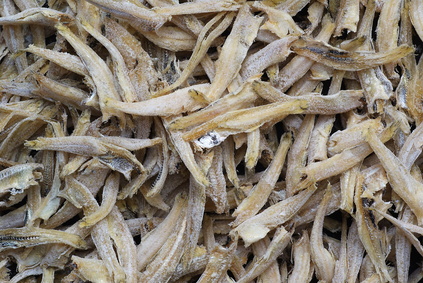
Spicy Fried Ikan Bilis with Peanuts
This combination of deep fried ikan bilis (dried anchovies) and peanuts is also great for nibbles to accompany pre-dinner drinks. It's worth making up a bigger batch as it keeps well in an air-tight container. Great to have on hand whether to give a meal a little fillip or for nibbles.
At its simplest, this is a combination of deep fried ikan bilis and peanuts. The combination may be given an extra spice twist with a caramelised spice mixture (as set out below).
To get the ikan bilis very crisp, they must be very dry. The traditional way is to rinse them, dry with paper towels and then gently dry them in a low oven. The freeze & fry method outlined below gives it a light crunchiness rather than hard crispness (another useful tip from my mother!).
Ingredients:
120g ikan bilis (dried anchovies)
approx 1/2 cup oil for deep frying
120g roasted peanuts
Caramelised spice mixture:
1 medium onion, ground to a fine paste
1/2 tspn chilli powder
2-3 tabpns oil
2 tspn sugar
Wash the ikan bilis thoroughly in a colander under running water. Dry well with kitchen paper towels. Spread in a single layer on a baking sheet. Cover tightly with clingfilm and place in freezer for several hours until frozen solid.
Heat oil in wok until smoking hot. Fry the ikan bilis in small batches (do not overload the wok!) until golden brown and crisp. Drain on paper towels. Set aside. At this point, you can combine them with the roasted nuts and serve as is.
To add a caramelised spice twist: Fry the ground onion and chilli powder in oil, stirring continuously, until golden and fragrant. Add the sugar, stir well and add the fried ikan bilis and peanuts and toss until evenly coated with the caramelised spice mixture.

